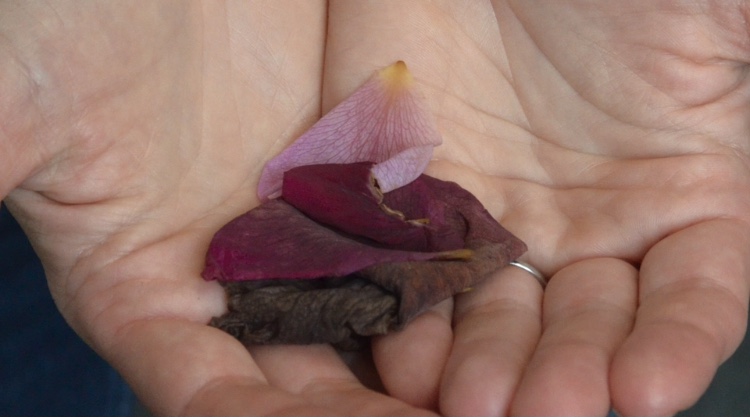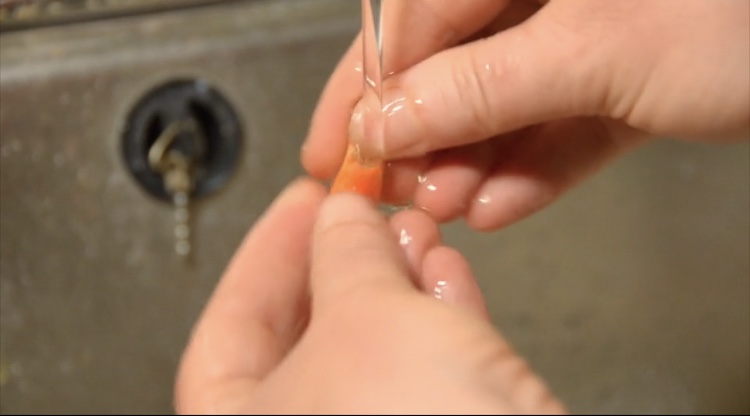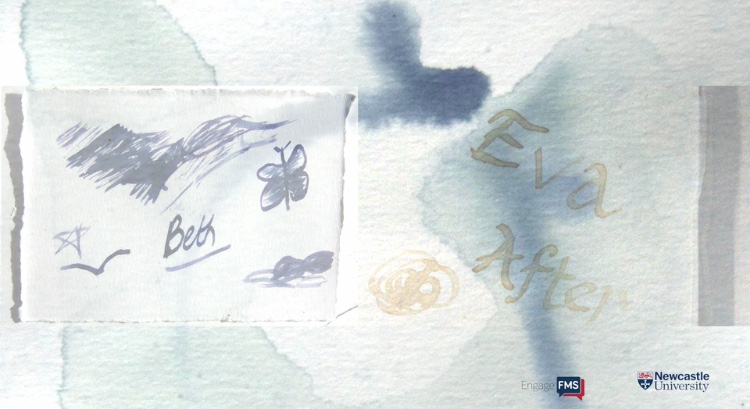
Last week, Judith and I travelled through to Sunderland University at the invitation of Tom Fairfax to speak about the twin loss project to second-year medical students, as part of the fourth Humanities in Medicine Symposium. It was wonderful to see so many medical students there, and to participate in such a thoughtful exploration of the intersections between medicine and the humanities.
As I listened to the other speakers at the event, I found myself reflecting on hands. The first speaker, Jonathan Coates, is a general practitioner in the east end of Newcastle and a research fellow at the Durham Institute for Medical Humanities. Outlining how his medical practice had come to embrace the humanities, Jonathan explained to the students that he had taken an optional module in Medical Photography during his undergraduate degree in Medicine, which had given him a starting point to which he had later returned. Jonathan’s chosen topic for his photography project was bereavement, and on his powerpoint slide he showed a photograph he had taken of a woman’s hands for his portfolio, which comprised a quiet yet eloquent portrait of grief.
Emmanuel Oladipo, Lecturer in Clinical Communication at Manchester University, talked to the students about his own spoken-word poetry in the context of medical training. As I watched him speak and perform his poetry, I reflected on the power of gesture to convey meaning. Performance poetry can amplify and elaborate on the interaction between word and gesture in everyday communication, emphasising that gesture sometimes reinforces what is spoken, and at other times contradicts it.
Artist Kate Stobbart has long had an interest in hand movement and gesture. Her work included video pieces in which only her hands were visible, performing gestures that have accompanied the words of others – televised speeches, for example. With the words taken away, these works ask us to think about the eloquence, if not the poetry, of hand gesture. As a practicing doctor, Kate engaged the students in conversation about how her artistic attention to non-verbal communication might also feed into the consulting room.
Watching our own film with the students, I found myself attending to the different hands that appear in the work. Hands are important to Kate Sweeney, the commissioned artist on the project, and part of the ritual that accompanied parents bringing materials into the workshops involved her photographing their hands holding what they had gathered. One of these photographs was integrated into the film, and depicts a parent holding rose petals. The photograph reminded me of Jonathan’s study of hands, in that both comprised intimate portrayals of grief. In Kate’s photograph, the tenderness and protective care with which the parent’s hands hold the fragile petals is evident. The petals had been gathered by the baby’s grandparents and when I look at this image, I also see their hands, carefully picking and sorting the petals so that they can be included in the project.

A child’s hands appear in the video sections of the film where the walks are depicted. These hands represent the involvement of the siblings in choosing and gathering the materials. The hands are exploratory – playful, even – as they test out the qualities of what they have found, and they give us a different orientation to loss. They remind us that the parental perspective sits alongside other frameworks of understanding and modes of communication.

The artist’s hands appear in those video sections of the film which document Kate’s making of the inks. These hands are active and doing – washing and sorting materials, grinding crab shell into powder, or pouring distilled liquid through paper filters. Juxtaposed with the hands of the parents and children collecting materials, we can see the co-creative process that is embedded at the heart of our project, as different hands perform the varied tasks and processes that are needed for the inks to be made.

This principle of co-creation is also evident in the various drawings that we see in the film, which were made either on the walks or in the workshops. In the image that closes the film, Kate overlaid the parents’ experiments with their inks in the workshops; each of them have inscribed the name of their lost baby. The ink drawings in the film gesture towards the hands that have made them, and they mark the trace of where these hands have been.
I extend my thanks to Tom, and to the other speakers, for such a rich and cohesive symposium, inviting us to think with the students about what the arts, humanities and social sciences might bring to medical training and practice. Watching the film in this context gave me a fresh perspective on the rich and varied vocabulary of hands that threads through and across the work.
